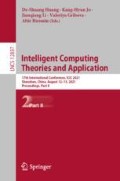Abstract
With increasingly fierce competition in other transportation markets, the customer churn in railway freight becomes a very serious problem. Facing the high similarity and indistinguishability of railway freight data, the customer churn prediction (CCP) becomes one of the challenging tasks in this industry. In this paper, a deep forest-based model is developed which can achieve better accuracy of churn predicting in railway freight customer and effectively separate the churners from the non-churners. Inspired by the layer-by-layer processing of deep neural network, the cascade structure is adopted to the deep forest, in which the input of each layer includes the original features and the feature information processed by the previous layer. The deep forest in this paper achieves the best performance in railway freight data with the accuracy of 0.78, the precision of 0.75, the recall of 0.66, the F1-score of 0.7 and the AUC value of 0.86, which are higher than those of decision tree, AdaBoost and XGBoost. At the same time, this model has smaller standard error and makes more stable performance.
Access this chapter
Tax calculation will be finalised at checkout
Purchases are for personal use only
References
Ascarza, E., et al.: In Pursuit of Enhanced Customer Retention Management: Review, Key Issues, and Future Directions. Cust. Needs Solut. 5(1–2), 65–81 (2017). https://doi.org/10.1007/s40547-017-0080-0
Aggarwal, C.C.: Data streams: models and algorithms. J. Springer Science & Business Media 31, 169–207 (2007). https://doi.org/10.1007/978-0-387-47534-9
Wang, Q., Zeng, W.: Thought and discussion on customer relationship management of railway freight transport system construction. J. Railway Transp. Econ. 01, 35–38 (2011). https://doi.org/10.3969/j.issn.1003-1421.2011.01.008
Athanassopoulos, A.D.: Customer satisfaction cues to support market segmentation and explain switching behavior. J. Bus. Res. 47(3), 191–207 (2000). https://doi.org/10.1016/S0148-2963(98)00060-5
Bhattacharya, C.B.: When customers are members: customer retention in paid membership contexts. J. Acad. Mark. Sci. 26(1), 31–44 (1998). https://doi.org/10.1177/0092070398261004
Jones, T.O., Sasser, W.E.: Why satisfied customers defect. J. Harvard Business Review 73(6), 88–99 (1995). https://doi.org/10.1061/(ASCE)0742-597X(1996)12:6(11.2)
Huang, B., Kechadi, M.T., Buckley, B.: Customer churn prediction in telecommunications. J. Expert Systems with Applications 39(1), 1414–1425 (2012). https://doi.org/10.1016/j.eswa.2011.08.024
Verbeke, W., Dejaeger, K., Martens, D., Hur, J., Baesens, B.: New insights into churn prediction in the telecommunication sector: A profit driven data mining approach[J]. Eur. J. Oper. Res. 218(1), 211–229 (2012). https://doi.org/10.1016/j.ejor.2011.09.031
Bilal Zoric, A.: Predicting customer churn in banking industry using neural networks. Interdisc. Description Complex Syst. Sci. J. 14(2), 116–124 (2016). https://doi.org/10.7906/indecs.14.2.1
Yu, X.B., Cao, J., Gong, Z.W.: Review on customer churn issue. J. Comput. Integr. Manufacturing Syst. 18(10), 2253−2263 (2012). CNKI:SUN:JSJJ.0.2012-10-020
Caigny, A.D., Coussement, K., Bock, K.W.D.: A new hybrid classification algorithm for customer churn prediction based on logistic regression and decision trees. J. Eur. J. Oper. Res. 269, 760–772 (2018). https://doi.org/10.1016/j.ejor.2018.02.009
Martens, D., Vanthienen, J., Verbeke, W., Baesens, B.: Performance of classification models from a user perspective. J. Decision Support Syst. 51(4), 782–793 (2011). https://doi.org/10.1016/j.dss.2011.01.013
Hemalatha, P., Keshav, H.: A hybrid classification approach for customer churn prediction using supervised learning methods: banking sector. Banking Sector (2019)
Gong, J., Ju, J., Sun, Z., Ying, C., Tan, S., Sun, Z.: Research on customer churn prediction method based on variable precision rough set and BP neural network. In: Proceedings of the 2018 International Conference on Transportation & Logistics, Information & Communication, Smart City(TLICSC), vol. 161, pp. 298–304 (2018). https://doi.org/10.2991/tlicsc-18.2018.46
Zhou, Z.H.: Ensemble Methods: Foundations and Algorithms. CRC, Boca Raton (2012). https://doi.org/10.1201/b12207
Idris, A., Khan, A., Lee, Y.S.: Genetic programming and adaboosting based churn prediction for telecom. In: IEEE International Conference on Systems, pp.1328–1332 (2012). https://doi.org/10.1109/ICSMC.2012.6377917
Huang, Y., et al.: Telco churn prediction with big data. In: The 2015 ACM SIGMOD International Conference, pp. 607–618 (2015). https://doi.org/10.1145/2723372.2742794
Ahmad, A.K., Jafar, A., Aljoumaa, K.: Customer churn prediction in telecom using machine learning in big data platform. J. Big Data 6(1), 1–24 (2019). https://doi.org/10.1186/s40537-019-0191-6
Zhou, Z.H., Feng, J.: Deep forest. J. National Sci. Rev. 6(1), 74–86 (2019). https://doi.org/10.1093/nsr/nwy108
Breiman, L.: Random forests. Mach. Learn. 45(1), 5–32 (2001). https://doi.org/10.1023/A:1010933404324
Liu, F.T., Ting, K.M., Yu, Y., Zhou, Z.-H.: Spectrum of variable-random trees. J. Artif. Intell. Res. 32, 355–384 (2008). https://doi.org/10.1613/jair.2470
Chen, P., Li, F., Wu, C.: Research on intrusion detection method based on Pearson correlation coefficient feature selection algorithm. J. Phys. Conf. Ser. 1757(1), 012054 (2021). (10pp). https://doi.org/10.1088/1742-6596/1757/1/012054
Author information
Authors and Affiliations
Editor information
Editors and Affiliations
Rights and permissions
Copyright information
© 2021 Springer Nature Switzerland AG
About this paper
Cite this paper
Liu, D., Zhang, X., Shi, Y., Li, H. (2021). Prediction of Railway Freight Customer Churn Based on Deep Forest. In: Huang, DS., Jo, KH., Li, J., Gribova, V., Hussain, A. (eds) Intelligent Computing Theories and Application. ICIC 2021. Lecture Notes in Computer Science(), vol 12837. Springer, Cham. https://doi.org/10.1007/978-3-030-84529-2_40
Download citation
DOI: https://doi.org/10.1007/978-3-030-84529-2_40
Published:
Publisher Name: Springer, Cham
Print ISBN: 978-3-030-84528-5
Online ISBN: 978-3-030-84529-2
eBook Packages: Computer ScienceComputer Science (R0)

